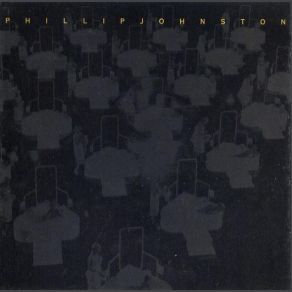Music for Films
Download links and information about Music for Films by Phillip Johnston. This album was released in 1998 and it belongs to Jazz, Avant Garde Jazz, Avant Garde Metal, Theatre/Soundtrack, Classical genres. It contains 32 tracks with total duration of 01:00:48 minutes.

|
|
|---|---|
| Artist: | Phillip Johnston |
| Release date: | 1998 |
| Genre: | Jazz, Avant Garde Jazz, Avant Garde Metal, Theatre/Soundtrack, Classical |
| Tracks: | 32 |
| Duration: | 01:00:48 |
| Buy it NOW at: | |
| Buy on iTunes $9.99 | |
| Buy on iTunes $9.99 | |
Tracks
[Edit]| No. | Title | Length |
|---|---|---|
| 1. | Hymn of the Souls Who Are Passing | 1:55 |
| 2. | Pozzi Winning | 1:06 |
| 3. | Willie's Room | 3:48 |
| 4. | Pozzi Losing | 1:26 |
| 5. | Walking to the Hotel | 0:23 |
| 6. | Discovering the Body | 0:59 |
| 7. | The Contract | 0:31 |
| 8. | Atonal Hillbilly Music | 3:20 |
| 9. | The Last Poker Game | 1:07 |
| 10. | Drawing 1 | 2:33 |
| 11. | Waiting 4 | 0:49 |
| 12. | JSG Boggs | 2:42 |
| 13. | Money | 3:15 |
| 14. | The Four Just Men | 2:35 |
| 15. | Carmen's Fantasy | 1:17 |
| 16. | Traveling Music | 1:39 |
| 17. | Carmen Robs the Bank | 2:47 |
| 18. | Eternal Rendezvous | 2:54 |
| 19. | Prologue | 1:40 |
| 20. | First Typhoon | 0:45 |
| 21. | Last Umbrellas 1 | 2:07 |
| 22. | Storm Rising | 2:24 |
| 23. | Closing Umbrellas | 1:06 |
| 24. | Last Umbrellas 2 | 1:34 |
| 25. | Raising Umbrellas | 2:59 |
| 26. | Drawing 2 | 1:10 |
| 27. | Life's Other Mystery | 4:18 |
| 28. | Carmen's Fantasy 2 | 1:22 |
| 29. | Carmen's Romance | 2:33 |
| 30. | Werner/Gabriella Theme | 1:21 |
| 31. | Carmen's Waltz | 0:56 |
| 32. | Drawing 5 | 1:27 |
Details
[Edit]A series of short pieces set a variety of moods, from mournful introspection to waltzy vibraphone pop to upbeat, funk sassiness to the kind of trance craziness that only psychotic banjos can bring. On Music for Films, Philip Johnston shows off his amazing breadth and depth, with compositions for four films: Geld directed by Doris Dörrie; Money Man and Music of Chance both directed by Philip Haas; and Umbrellas directed by Henry Corra, Grahame, Weinbren, and Albert Maysles. The tracks are not entirely in order by film (for example, the songs from Geld are tracks 13-18 and 27-31), which makes it difficult at times to get an overall feel for the music of a particular film. The music within each film, however, is so varied that it makes little difference. This album has the kind of non-obtrusive beauty that makes film music great. It is easy to imagine it coloring a scene and helping to make it unforgettable, and difficult to imagine it distracting or overpowering one. This is a fine addition to Johnston's work.